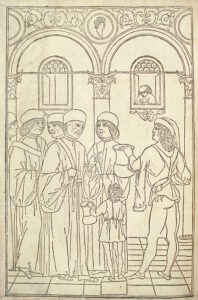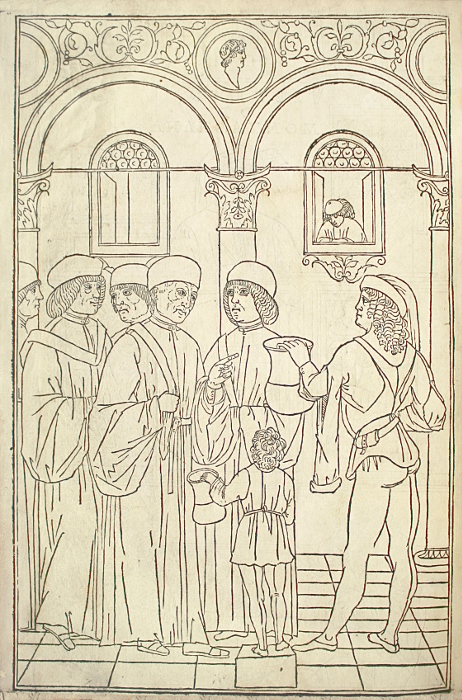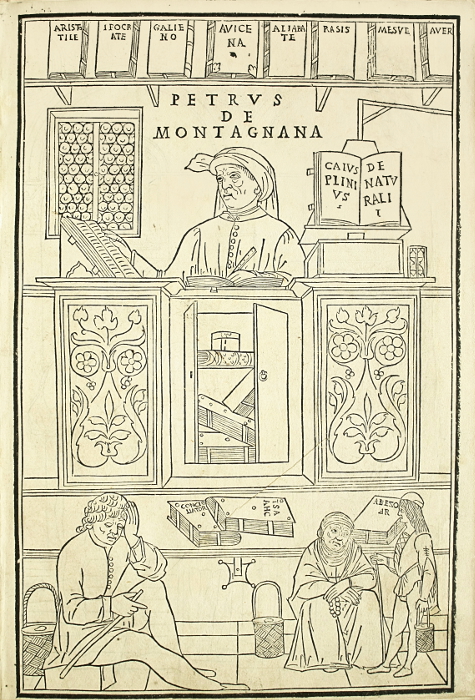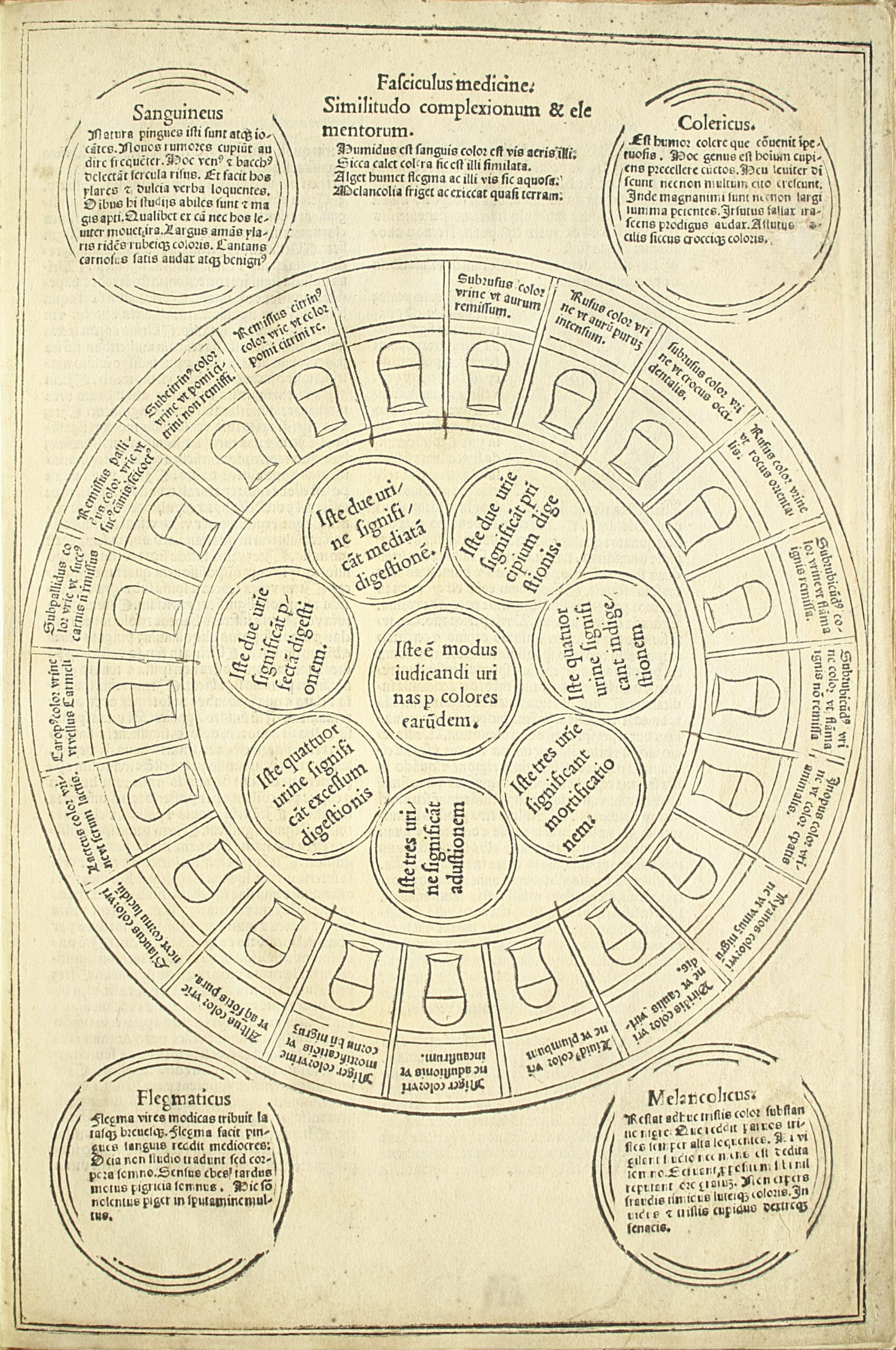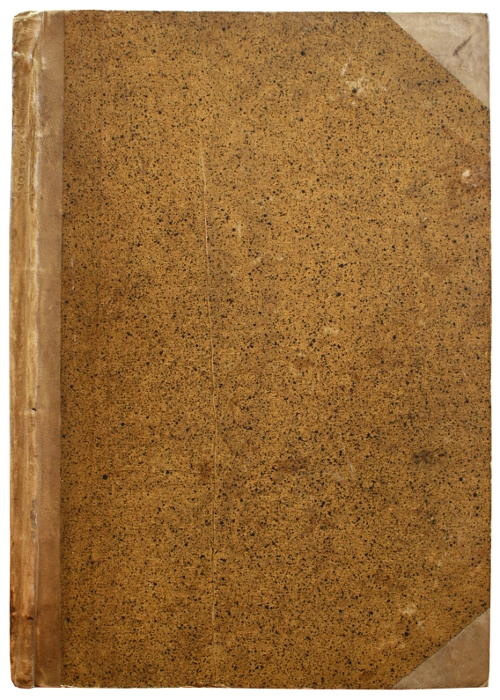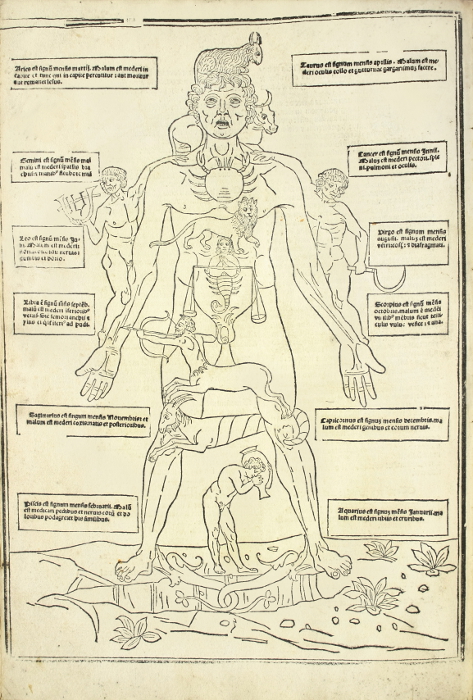Venise, J. et G. de Gregoris, [28 mars] 1500.
Folio [313 x 207 mm] of 34 ll. (a-e6 f4). Complete. External borders of the frontispiece and of A2 redrawn in ink. Covers in mottled paper, quarter vellum. Binding of the 18th century.
Third Latin edition of one of the most beautiful illustrated books of ancient medicine. Goff. K-15; BMC V 351; Sander 3746; Essling 588; Choulant-Franck, History and bibliography of anatomic illustration, p. 121: “An absolutely new Latin edition”.
Initially published in 1491, translated into Italian in 1493 and into Spanish in 1495, the work presents the first printed anatomic plates. The 1493 and 1495 editions mark a change of direction in iconographic tradition by assuming the body representation unlike medieval tradition. This third Latin edition includes, as the previous ones, Joannes de Tussignano’s treatise, De peste evitanda, and Mundino’s work of anatomy, but it is enlarged here with the treatise on infantile diseases, De egritudinibus puerorum, by Rhazes.
The superb illustration includes 10 full-page woodcuts attributed to the school of Gentille Bellini (1420-1507): Pierre de Montagnana in his chair, Doctor holding consultation, Explanatory chart for the analysis of the urines, Veins of the human body, Zodiac-Man, Sitting Woman with open abdomen, Study of the wounds and injuries caused by arms, Seat of the different capacities and diseases, Doctor at the bedside of a plague victim, Dissection lesson.
This illustration provides one of the best copies of woodcut art in the 15th century and represents one of the master-pieces of Italian Renaissance.
“The engravings are of an admirable beauty of invention and delicacy of drawing; after Poppelreuther it is the same artist who created the Poliphilo’s illustration, but they also have been attributed to Mantegna, Gentile Bellini, and to other artists.” (Max Sander).
These woodcuts are used again in the Latin edition of 1495, but have been shorten at the bottom, so that for instance, on the dissection plate, the feet of the table and the basket on the ground disappear. The initials are decorated with foliated pattern and flowers on a black background, of which three large ones at the beginning of the text.
Provenance: A. Brölemann (engraved ex libris); Carlo Alberto Chiesa (1978).
